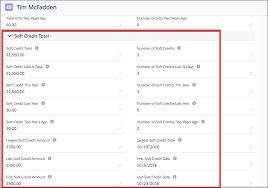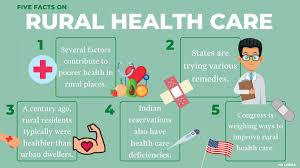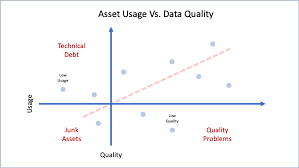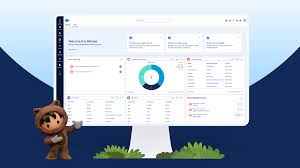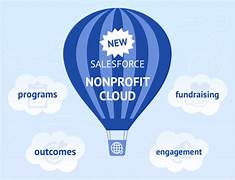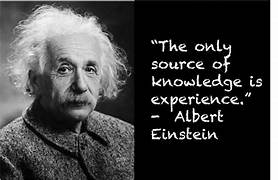The healthcare industry is on the brink of a digital revolution, and in this era, Salesforce Agentforce—a new AI technology in healthcare—is set to play a pivotal role in providing innovative solutions that enhance AI-driven patient engagement, streamline processes, and improve overall AI services in healthcare. Salesforce Agentforce AI integration in healthcare will lead to significant cost reductions and improved operational efficiency. Healthcare organizations that leverage Agentforce have reported substantial improvements in productivity by automating administrative tasks and streamlining workflows. In this insight, we’ll explore Salesforce Agentforce—the new AI technology in healthcare—the role of conversational AI in healthcare, and what the future holds for AI-driven medical solutions. What is Agentforce and How Does It Support Healthcare? Salesforce’s Agentforce is designed to provide healthcare organizations with fully tailored AI-powered agents that can operate various tasks. These AI agents can handle customer support enquiries, assist in sales processes, and even provide real-time coaching for healthcare professionals. Agentforce AI agents can manage appointment scheduling, follow-ups, and patient enquiries efficiently. The agents also integrate robust data protection protocols to ensure all patient information is securely handled, helping healthcare providers streamline administrative processes while maintaining high standards of security and compliance. By leveraging these AI services in healthcare, organizations can optimize workflows and improve overall efficiency. Challenges in Healthcare AI Integration Healthcare organisations can face several challenges when integrating new AI technology in healthcare. These challenges include data security concerns, the complexity of managing diverse patient needs, and ensuring workflow efficiency. One of the key obstacles is gaining a unified, up-to-date view of patients, providers, and payers while still ensuring multi-channel communication. Data security is a top priority for healthcare institutions, as they must safeguard patient information while complying with stringent regulations. Salesforce Agentforce tackles these challenges by providing advanced security measures, automated workflow optimisation, and real-time decision-making support. Pre-Built Use Cases for Healthcare Salesforce’s Agentforce includes multiple out-of-the-box AI capabilities that enhance AI patient engagement and improve healthcare operations. Some of its key applications include: • Intelligent Document Processing: AI-driven data extraction from medical records reduces administrative workload, allowing healthcare professionals to focus on patient care. • Medical History Summarization: AI agents summarize patient medical histories, prescriptions, andfactors that influence health and well-being, enabling caregivers to make more informed decisions. • Automated Appointment Scheduling: AI-driven systems manage patient appointments, reducing wait times and improving the overall patient experience. • Claims Processing Optimization: AI consolidates data for claims processing, reducing delays and enhancing revenue cycle management. • Trial Candidate Matching: AI-driven algorithms identify suitable candidates for clinical trials by analyzing demographic and medical data. Custom AI Agents for Healthcare Agentforce also enables healthcare organizations to create custom AI agents designed for specific operational needs. These AI agents help automate repetitive tasks, improve AI patient engagement, and optimize care management processes. • Patient Services: AI-driven chatbots summarize medical histories, generate personalized emails, and assist with healthcare assessments. • Provider Network Management: AI optimizes provider networks by assessing provider details and minimizing patient wait times. • Program and Patient Outcome Management: AI offers real-time insights into patient adherence to programs and provides recommendations to improve satisfaction rates. • Benefits Verification: AI streamlines benefits verification through automated call scripts and pharmacy benefits summaries. The Future of AI in Healthcare As AI technology continues to evolve, we can expect deeper integration of AI services in healthcare, particularly in robotic-assisted surgeries, automated patient monitoring, and virtual healthcare assistants. These innovations will not only enhance patient engagement but also reduce the burden on healthcare professionals by automating time-consuming administrative tasks. Conversational AI in healthcare is set to play an even bigger role in the industry. AI-powered chatbots and virtual assistants will become more sophisticated, offering more accurate diagnoses, providing mental health support, and assisting in real-time patient interactions. This will lead to a more seamless, accessible, and efficient healthcare system. With these developments, healthcare providers will need to continue prioritising AI ethics, data security, and compliance to ensure that AI implementation remains both safe and effective. By leveraging trusted AI solutions like Agentforce, healthcare organizations can stay ahead of the curve, delivering cutting-edge care while maintaining operational efficiency. Implementing Agentforce with Tectonic AI Consulting and Integration Specialists – Partnering with the right AI implementation experts ensures smooth integration and better alignment with your healthcare operational goals. Organizations working with Tectonic, a trusted AI and Salesforce implementation partner, can accelerate the deployment of Agentforce, ensuring optimal efficiency and productivity. Tectonic specializes in integrating new AI technology in healthcare to enhance operational efficiency and improve AI patient engagement. Our Salesforce team has helped multiple healthcare organizations seamlessly implement Agentforce, ensuring that AI-driven workflows are tailored to meet the specific needs of their providers and patients. By working with Tectonics, healthcare organizations can leverage: • Seamless AI Integration: Ensuring that Agentforce aligns with existing systems and operational workflows. • Custom AI Development: Designing AI-powered solutions that address key industry challenges. • Ongoing Support and Optimization: Continuous monitoring and improvement to maximise the effectiveness of conversational AI in healthcare. Healthcare providers who collaborate with Tectonic can unlock the full potential of Agentforce, leading to enhanced patient experiences and streamlined operations. The adoption of new AI technology in healthcare will reshape the industry. Agentforce addresses key challenges in healthcare by offering conversational AI in healthcare, AI-powered automation, and data-driven decision-making support. As AI continues to evolve, Agentforce will play an increasingly vital role in optimising AI services in healthcare, empowering medical professionals, and ensuring better patient outcomes. Contact Tectonic today to learn more about implementing Agentforce and modernising your healthcare services. Content updated February 2025. Like Related Posts Salesforce OEM AppExchange Expanding its reach beyond CRM, Salesforce.com has launched a new service called AppExchange OEM Edition, aimed at non-CRM service providers. Read more The Salesforce Story In Marc Benioff’s own words How did salesforce.com grow from a start up in a rented apartment into the world’s Read more Salesforce Jigsaw Salesforce.com, a prominent figure in cloud computing, has finalized a deal to acquire Jigsaw, a

